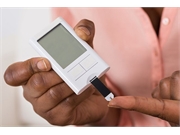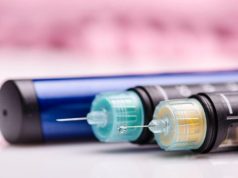Adults diagnosed with type 2 diabetes at age 21 to 44 years less likely to achieve early glycemic control
FRIDAY, April 10, 2020 (HealthDay News) — Adults diagnosed with type 2 diabetes between the ages of 21 and 44 years have higher initial hemoglobin A1c (HbA1c) levels and a lower likelihood of achieving glycemic control within one year of diagnosis versus patients diagnosed in middle age, according to a study recently published in Diabetes Care.
Anjali Gopalan, M.D., from Kaiser Permanente Northern California in Oakland, and colleagues examined data from a large, integrated health care system to identify 32,137 adults (aged 21 to 64 years) with incident diabetes (first HbA1c, ≥6.5 percent). Glycemic control and initial care between adults with younger onset of type 2 diabetes (21 to 44 years) was compared to that of patients with middle-age onset (45 to 64 years).
The researchers found that 26.4 percent had younger-onset and 73.6 percent had middle age-onset type 2 diabetes. Higher initial mean HbA1c values (8.9 percent) were seen among adults with younger onset versus adults with middle-age onset (8.4 percent). Even after adjusting for HbA1c at diagnosis, adults with younger onset had lower odds of achieving an HbA1c <7 percent one year after diagnosis (adjusted odds ratio [aOR], 0.70; 95 percent confidence interval [CI], 0.66 to 0.74). Compared with patients with middle-age onset, adults with younger onset had lower odds of in-person primary care contact (aOR, 0.82; 95 percent CI, 0.76 to 0.89), but they did not differ in telephone contact (aOR, 1.05; 95 percent CI, 0.99 to 1.10). Odds of starting metformin were higher in adults with younger onset (aOR 1.20; 95 percent CI, 1.12 to 1.29), but they had lower odds of adhering to the medication (aOR, 0.74; 95 percent CI, 0.69 to 0.80).
“Adults with onset of type 2 diabetes at a younger age were less likely to achieve glycemic control at one year following diagnosis, suggesting the need for tailored care approaches to improve outcomes for this high-risk patient population,” the authors write.
Abstract/Full Text (subscription or payment may be required)
Copyright © 2020 HealthDay. All rights reserved.








